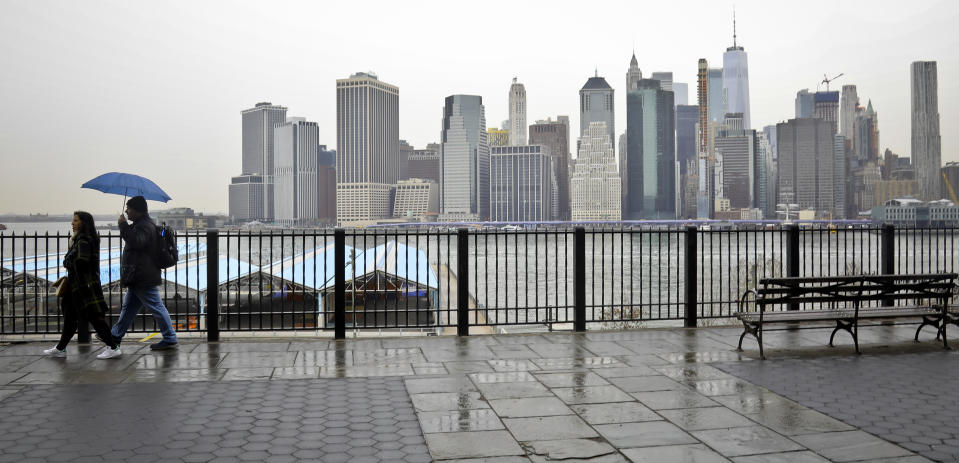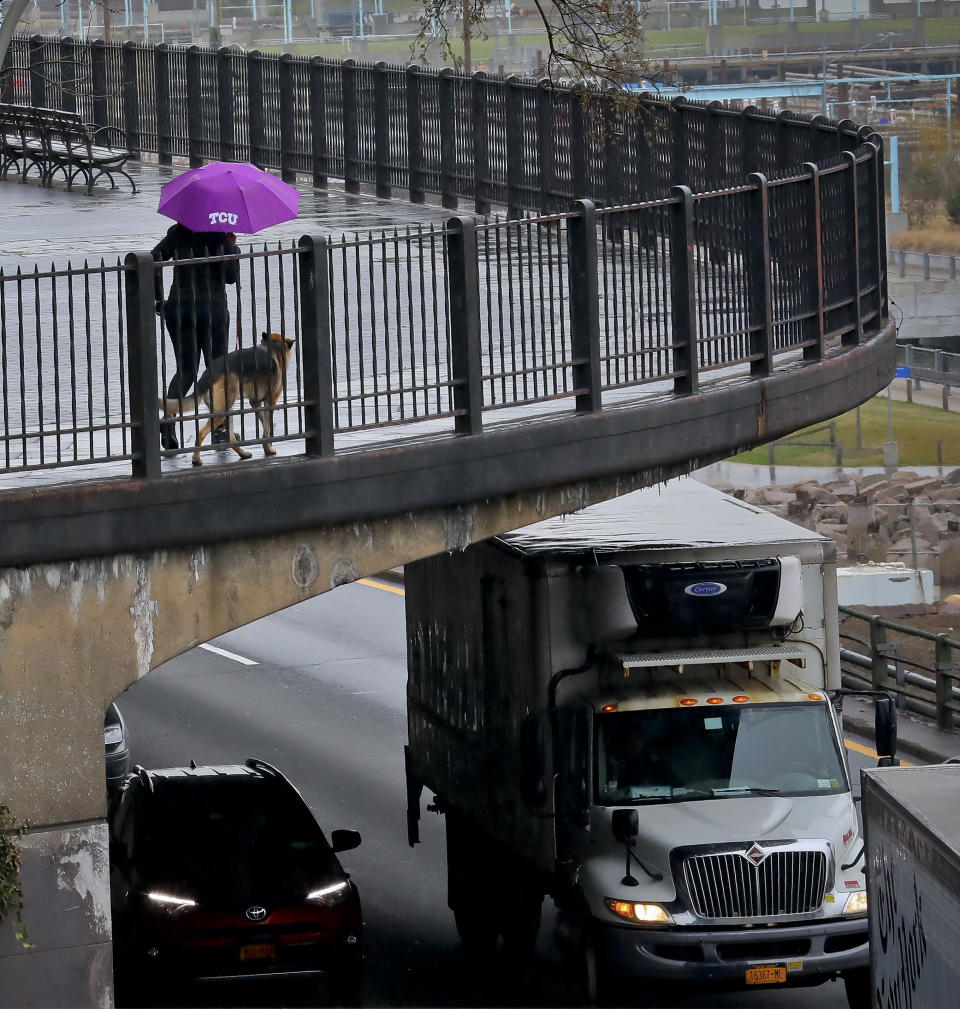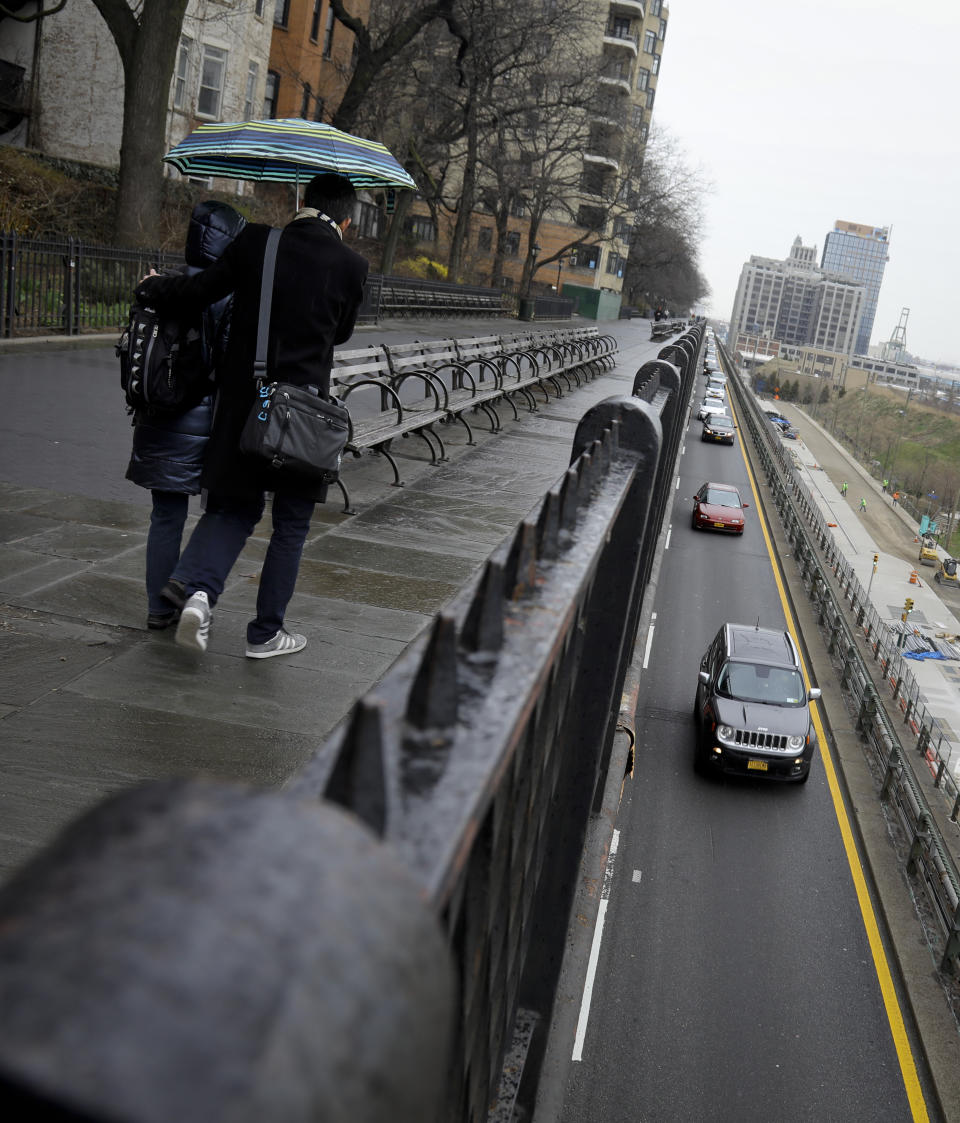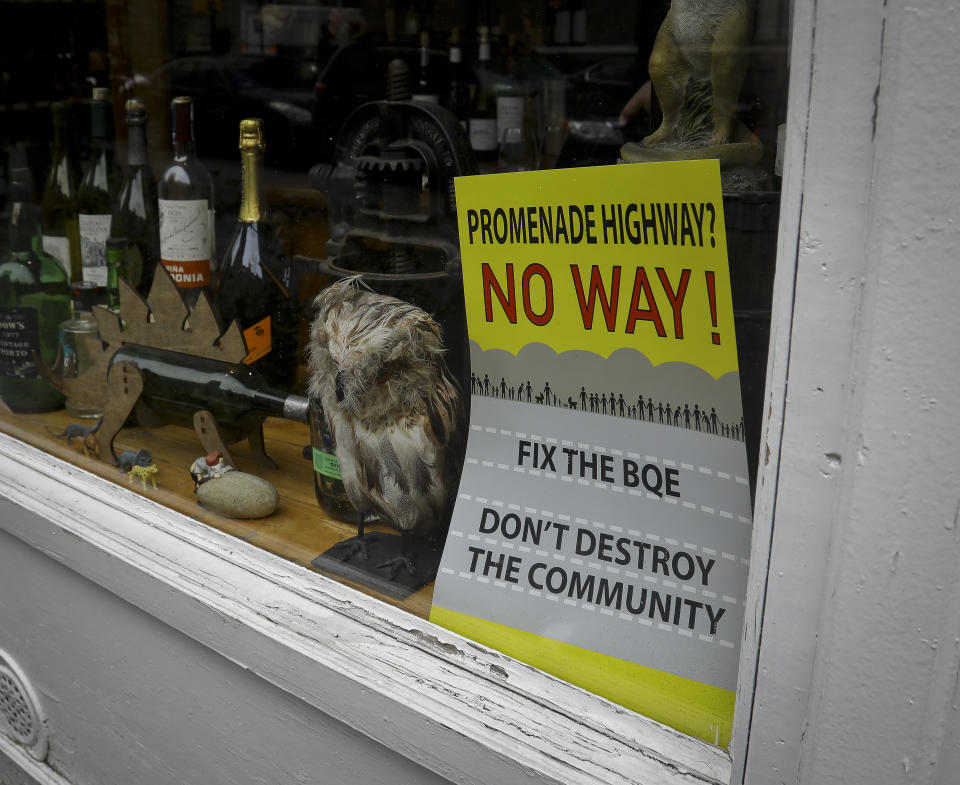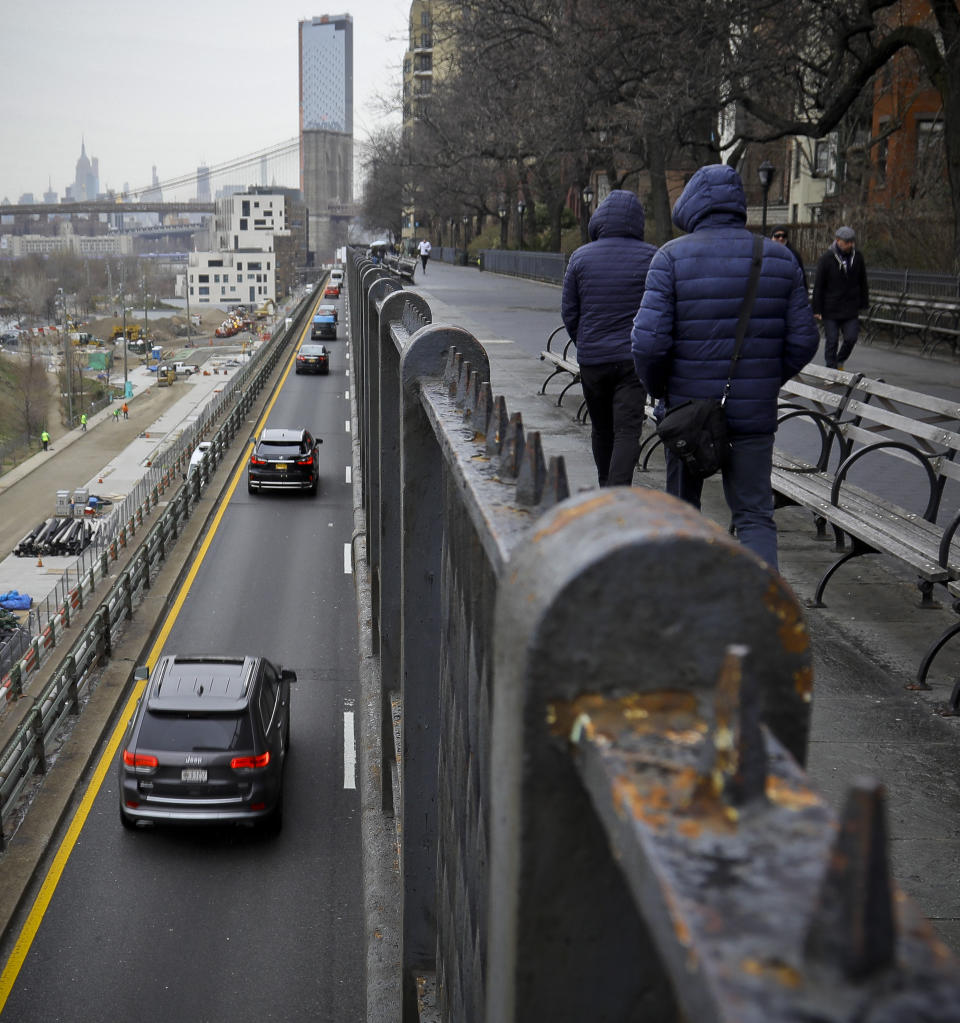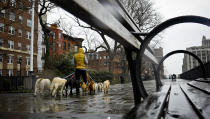NYC ponders how to rebuild highway and preserve beloved view
NEW YORK (AP) — New York faces a challenge: How does it fix a disintegrating highway that serves as a critical traffic artery while preserving the Brooklyn Heights Promenade, a park beloved for its cinematic views of the Manhattan skyline?
Built in in the 1950s, the promenade makes up the top deck of a 1.5-mile stretch of the Brooklyn-Queens Expressway, a triple cantilevered highway built into a bluff, with a neighborhood of elegant townhouses on one side and a thrilling vista across the East River on the other.
Tourists, New Yorkers and television and film producers have been drawn for decades to the elevated esplanade, which in evenings, especially, is one of the most romantic spots in the city, despite the rumbling of traffic on two highway decks hidden beneath the park.
The problem is that the whole structure, now 65 years old, is falling apart. And, until this week, the city's favored proposal had been to build a temporary highway on top of the promenade that would operate for at least six years while the expressway was rehabilitated.
Howls of protest from neighborhood residents led Mayor Bill de Blasio to back off that $3.5 billion plan this week.
Wednesday, he announced he had assembled an expert panel of urban planners, architects, engineers and civic leaders to come up with new concepts for the artery, which threads through the entrance to the Brooklyn Bridge.
"We will be engaging in a transparent, collaborative process to find the best solution for one of the most critical transportation corridors in the nation," the mayor said in a statement.
The pressure is on because the six-lane expressway "won't be drivable within a decade," said Carlo Scissura, the head of the New York Building Congress, which is working with the city on coming up with a replacement plan.
Conceived by Robert Moses, a public planner known as the legendary master builder of 20th-century New York, the cantilevered section of the expressway was intended to carry about 50,000 vehicles a day when it opened in 1954, not the 150,000 that roll over it now, including heavy trucks, whose weight is a destructive burden over time.
Polly Trottenberg, the city transportation commissioner, said steel rods inside concrete parts of the structure are corroding from decades of road salt seeping in through cracks.
"We don't have all the time in the world because the BQE is deteriorating. It's a substandard structure with a lot of vibration, volume of traffic and weight that was not envisioned when it was built," says Trottenberg, adding, "We feel an urgency about this.
And rebuilding it won't be easy, given both its unusual location and the fact that turning off the traffic flow could create chaos. It is a critical highway, and cars and trucks seeking an alternative route could find themselves navigating neighborhood side streets also teeming with pedestrians and cyclists.
"Experts all over the world agree on the level of complexity of this project — one of the hardest on the planet," Trottenberg said. She wants de Blasio's 16-member panel to be on an "aggressive schedule," meeting at least once a week.
Options under discussion include reconstructing the highway one lane at a time, which could double the length of construction, or reimagining the project entirely.
The Bjarke Ingels Group, a design and architecture firm, offered a proposal this week that would involve creating a new six-lane highway at ground level, covered over with decks of parkland, with the promenade preserved on top.
"We're hosting meetings, talking to experts, putting together ideas, figuring out what we can build," Scissura said. "We're wide open, we're listening, we'll work with anybody who's interested."
The city has earmarked money for about half the cost and is asking the state and federal government to help with the rest.
Any work won't start till at least two years from now, Trottenberg said.

 Yahoo News
Yahoo News 